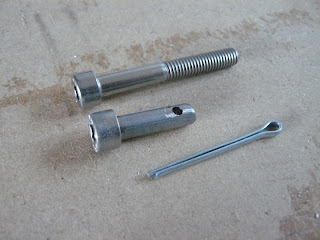Firstly, a Happy New Year to anyone who is following this build or is reading for the first time. I haven't had chance to touch the build for the last few weeks with one thing and another and then just when I get a couple of days off work, I feel like crap! Man flu and all that .... oh well!! Anyway, although it is cold out in the garage, I didn't want to waste 2 days so decided to see what I could get done today.
The first thing was to start to wire up the ETB gauges. You may remember in the last post, I mentioned I had an instrument loom made for me by the factory so wiring up the gauges was very straight forward. Here are the gauges fitted into the gauge surround, making sure they are in the right order.
Next I put the dashboard over and lined up the gauges and clamped them in place. I used a straight edge to make sure they were lined up correctly, that the wording on each was level, a bit anal I know, but I want it to be right and I know if it isn't it will really bug me!
Anyway, it was then a simple case of following the diagrams I got with the gauges and also the wiring diagrams I had from GBS. It all made pretty good sense. Only time will tell when I actually put 12 volts through them and fire up the engine as to whether I have done it right or not.
Here is the the finished wiring with the warning light module in place as well.
I just had to then see what it would look like fitted to the car. Personally I think it looks pretty good.
Next job to tackle was the bonnet. First I had to remove the exhaust manifold so I could trial fit the bonnet. Now at this point I have to say that this is one of the things about the car I don't like. The bonnet is rolled aluminium and really does not fit very well at all. It will be better when it is all clamped down in place but at the moment it is pants! When I tried pulling the sides in around the nose cone, there was a gap all the way round of between 5mm and 8mm and this just can't be correct. Same around the scuttle. Even with the sides pulled in tight, there are still gaps. The picture below is without it pulled in tight, but you can get the drift.

I decided to walk away at this point as I didn't want to rush it and get it wrong. It may be that it needs re-rolling and re-folding, but I don't have the tools to do that. I am going to consult my son-in-law, who does body work and painting and get his help with it. He may know someone who has the right tools to get the bonnet fitting correctly. It would be a shame to ruin the car at this point with a badly fitting bonnet! I will also consult the very knowledgable folk on the RHOCaR forum.
















